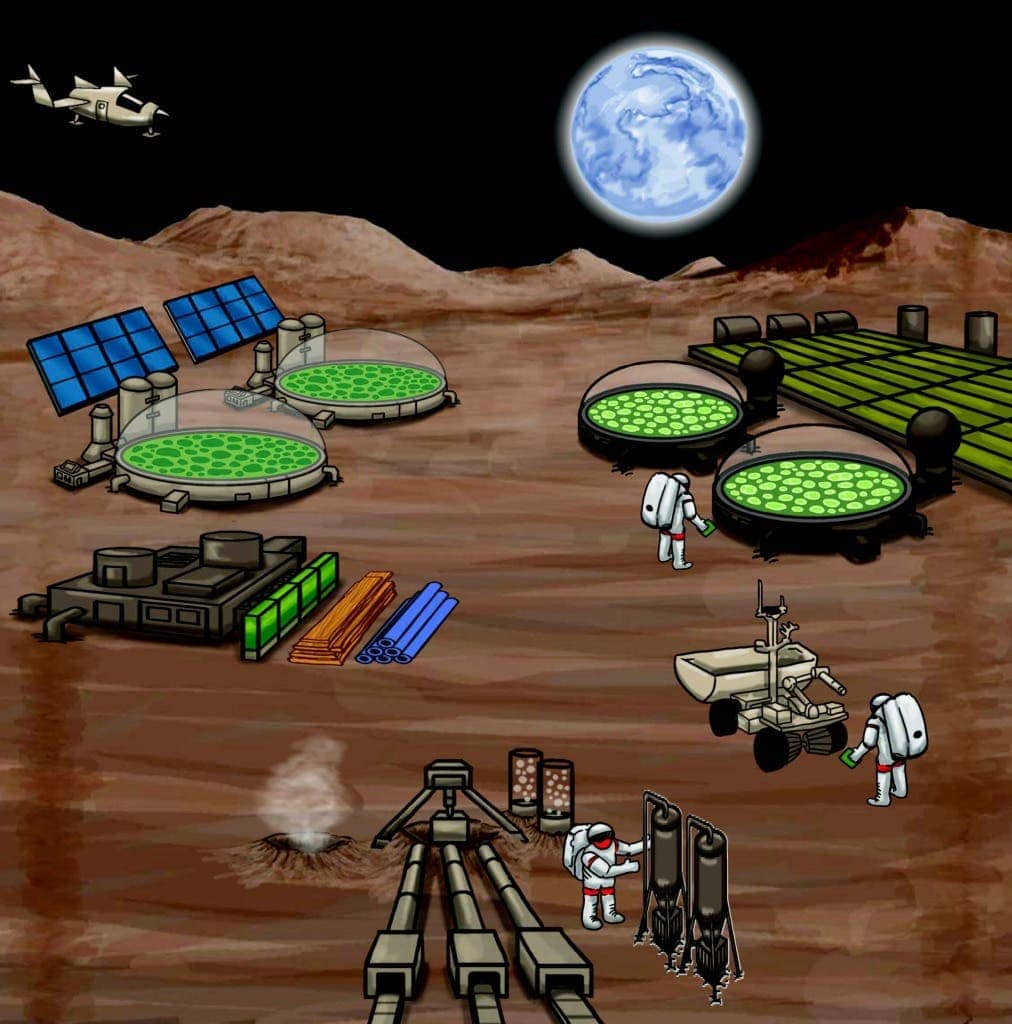In all likelihood, we won’t be seeing a manned mission for Mars before 2030, but until this happens forefront research is pushing the limits so we can finally get there. This includes synthetic biology, which promises to play a key role in reducing payload – a major concern in every space application, manned or not – and provide food and logistic needs for astronauts landing on the Red planet. A new study published in the Journal of the Royal Society Interface reports just a few of the possible outcomes of using synthetic biology, complete with a technical-economical study. The findings suggests that synthetic biology will become an integral component of any planned manned mission to Mars.
Synthetic biology helps us reach a dead planet

“Not only does synthetic biology promise to make the travel to extraterrestrial locations more practical and bearable, it could also be transformative once explorers arrive at their destination,” says Adam Arkin, director of Berkeley Lab’s Physical Biosciences Div. (PBD) and a leading authority on synthetic and systems biology.
“During flight, the ability to augment fuel and other energy needs, to provide small amounts of needed materials, plus renewable, nutritional and taste-engineered food, and drugs-on-demand can save costs and increase astronaut health and welfare,” Arkin says. “At an extraterrestrial base, synthetic biology could make even more effective use of the catalytic activities of diverse organisms.”
Synthetic biology is an exciting field is evolving so rapidly that no widely accepted definitions exist. Common to many explanations is the idea of synthetic biology as the application of engineering principles to the fundamental components of biology. Most obvious, synthetic biology involves genetic engineering where scientists directly interfere with an organism’s genetic makeup and manipulate it for certain outcomes like increased plant yield, producing of a new protein and so on. But it’s not only about manipulating existing DNA; synthetic biologists are most excited about designing DNA from scratch to design organisms that do new things–like produce biofuels or excrete the precursors of medical drugs.
[DON’T LAUGH] Manned mission to Mars will use poop as radiation shielding
Researchers at the Lawrence Berkeley National Laboratory, US sought to analyze how synthetic biology might be used to harness available volatiles and waste resources on manned long-duration space missions. The team looked at a typical manned mission lasting 916 days (210 days for travel to there and back again and the other 496 days to stay on the Red Planet) made-up of six crew members. Six people might not sound like much, but considering the mission’s length and the distance they need to travel (~140 million km for there and back at Mars’ closest distance; check this fantastic website for a visual representation), this means a lot of fuel, food, medicine, martian habitat and life support systems need to be integrated. In turn, this implies a massive payload that needs to be delivered.

To make an idea, one of NASA’s rules of thumb is that for every pound of payload, you need 99 pounds to “support”, ranging from fuel, to oxygen, and all of the above listed products. Today, it costs $10,000 to put a pound of payload into Earth’s orbit, yet for Mars this would cost even more. The point is that for a Mars mission to be feasible, scientists need to find new ways of miniaturizing technology, reuse materials and, most importantly, harvest compounds from external sources (i.e. Martian soil).
[RELATED] Manned mission to Mars might destroy Martian life
The science of weight control
This is where synthetic biology comes in. The authors looked at four key areas where synthethic biology might render improvements, using common space metrics like mass, volume and power to describe them. The areas are: fuel generation, food production, biopolymer synthesis, and pharmaceutical manufacture. Here are the key findings:
- microbial biomanufacturing capabilities could reduce the mass of fuel manufacturing by 56%
- the mass of food-shipments by 38%
- shipped mass to 3-D print a habitat for six by a whopping 85%
- microbes could also completely replenish expired or irradiated stocks of pharmaceuticals (100%), which would provide independence from unmanned re-supply spacecraft that take up to 210 days to arrive
These would all be achieved using synthetic biology processes to turn crew waste, Martian soil, minerals, gases and from the atmosphere into food, medicine, propellants and raw materials for three-dimensional printing.
[MAKING A NEW PLANET] Mars terraforming: building a new Earth!
“The mineral and carbon composition of other celestial bodies is different from the bulk of Earth, but the earth is diverse with many extreme environments that have some relationship to those that might be found at possible bases on the Moon or Mars,” Arkin says. “Microbes could be used to greatly augment the materials available at a landing site, enable the biomanufacturing of food and pharmaceuticals, and possibly even modify and enrich local soils for agriculture in controlled environments.”
There are a lot of IFs and assumptions listed in the study, however, which the authors acknowledge. As we stand today, a lot of the processes outlined by the authors aren’t feasible at the moment, but the same thing can be said about conventional space flight technologies required for a Mars mission. That’s not to say that overcoming these challenges is impossible, far from it. The authors argue that by significantly investing in these processes, the potential payoff would be immense.
“We’ve got a long way to go since experimental proof-of-concept work in synthetic biology for space applications is just beginning, but long-duration manned missions are also a ways off,” says Amor Menezes, a postdoctoral scholar in Arkin’s research group at the Univ. of California (UC) Berkeley. “Abiotic technologies were developed for many, many decades before they were successfully utilized in space, so of course biological technologies have some catching-up to do. However, this catching-up may not be that much, and in some cases, the biological technologies may already be superior to their abiotic counterparts.”






